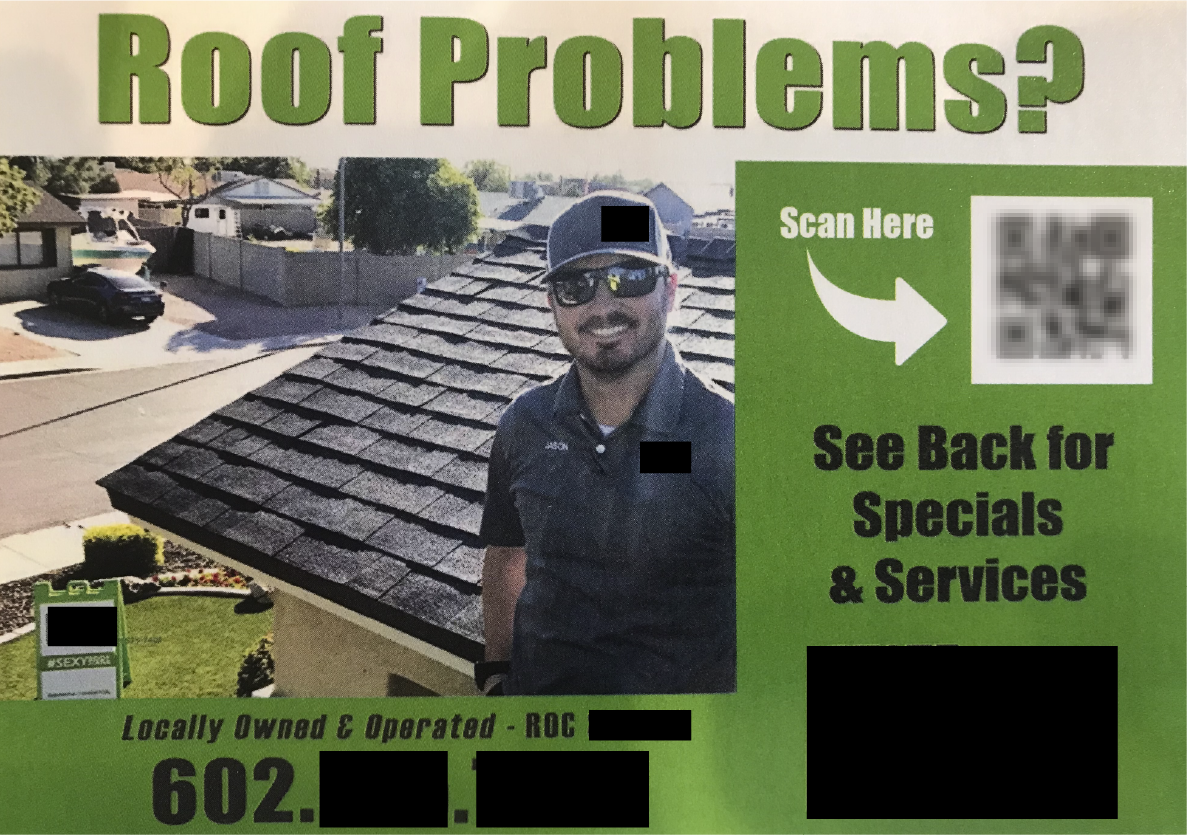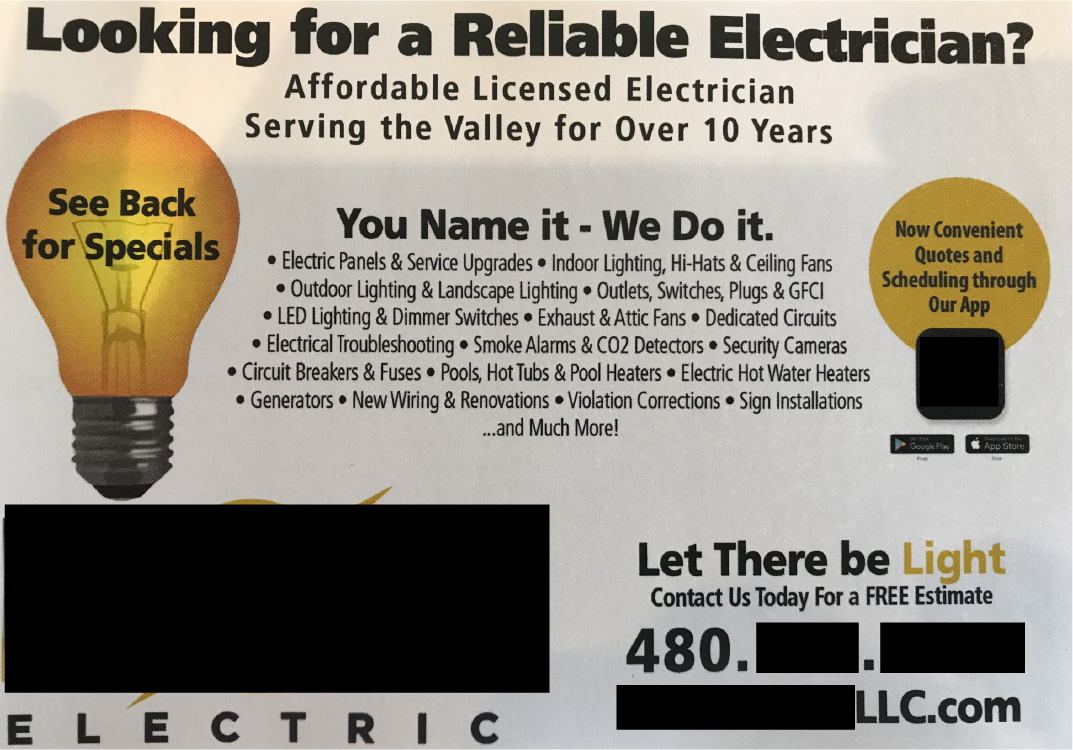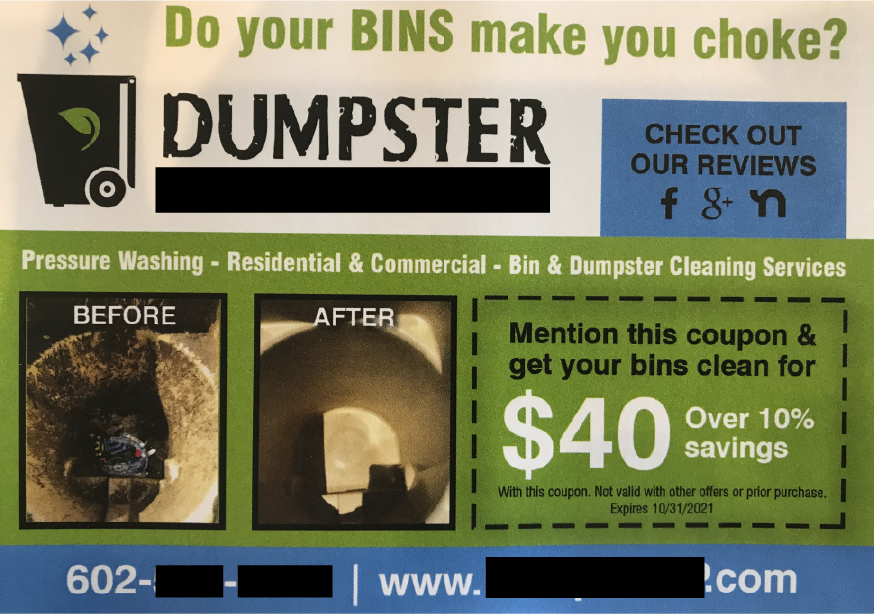
In today’s modern age of technology, you’ve got eight seconds to catch and hold someone’s attention. In addition to print and radio, you also compete with screens. Lots of screens: phones, tablets, watches, digital billboards, movies, and television. Everything is competing for your attention. Sometimes it may feel like you’re drinking from the firehose; because you are. So are your prospective customers.
The winning formula
Long-time readers of my Pro Business Tips column may recognize the four-part formula for winning the eight-second rodeo:
If you can’t grab a prospect’s attention within eight seconds, you get lost in the noise. It may be easy to understand, but it can be difficult to execute. Below are some real-world examples of the right and wrong ways to advertise your services as a small business.
Example 1
This one is my favorite. It gets right to the point. I don’t have roof problems, but I’m starting to wonder if I do. I see a professional, enjoying his work, in the place the work will be done. I see an example of the finished product: a well-manicured roof. I see branding and consistency everywhere. This guy pays attention to the details which is what I would want if I were paying for the literal “roof over my head.” They have the interrupt perfected. The engage is subtle with the “see back” (on the back of the postcard has a full list of specials and pricing), and the educate gives the prospect an opportunity to go to their website by scanning the data matrix code. The offer is simple: make a phone call.
Example 2
This one is also good, but not as good as Example 1. The interrupt is solid: everybody should want a reliable electrician. The hook here is that they are playing on the hot button of having a previous bad experience. The engage blends directly into the educate: they do everything. The offer is much more substantial — download an app, make a phone call, or visit a website; along with a strong call to action of “contact us.”
Example 3
This one is a head-scratcher. I would have tossed it aside and moved on (I did in fact do that before realizing this would make a great topic to write about). They have all the components of a winning formula but in the wrong order. The offer is strong: one year of no payments, with a giant phone number, and a clean website URL. The educate is all over the page, they appear to be excellent at what they do, and they have the awards to prove it. The engage and call to action are a bit confusing — “elevate” is an interesting verb choice. The interrupt is the biggest failure — it does not speak to the prospect; they talk about themselves. Why should we care who they are until they solve our problem as a consumer?
If you take a closer look, the anatomy of this ad is pretty solid: solar panels are in the middle of the frame, they have the words “new home solar installations” so we clearly know what they do and what they offer, and we know they have independent verification which builds trust.
The problem is they did everything backward and ended up in the bottom of the trash heap.
Example 4 
This gets points for being clever, but that can also be a double-edged sword. The interrupt is eye-catching, but not necessarily intuitive. An ad is like a joke: if you have to explain it, it’s not very good. The engage is very clear, it’s in white font against a dark background in the center of the piece; very compelling. Equally compelling are the before and after images. The educate is blended into the engage, and the social links to Facebook, Google+ (is that still around?), and Nextdoor provides independent verification to build trust. The offer is solid: very clear and includes a coupon.
Like I said, points for being clever, but the interrupt needs work. Everything else about this ad is great.
An idea that sticks
Take another look at each of the four examples above. What did they do right? What could they improve upon? Now, look at your own marketing. Do you see any similarities? Have you identified any areas to improve?
The interrupt is critical. The interrupt shows that you know your customer. Customers need to know that you understand their problems, so you can fix them. If you do not have a great interrupt, the rest of the formula needs to work twice as hard to get the point across.
A great ad will burrow inside the mind of your prospect and take hold. One of my favorite lines from any movie comes from “Inception” by Christopher Nolan:
“What is the most resilient parasite? A bacteria? A virus? An intestinal worm? … An idea. Resilient. Highly contagious. Once an idea has taken hold of the brain, it’s almost impossible to eradicate. An idea that is fully formed, fully understood, that sticks.”
If you’ve got eight seconds to win the rodeo, your best shot is to plant an idea in the mind of your prospect, so they seek out your company over other comparable options.
Enjoy the ride.







